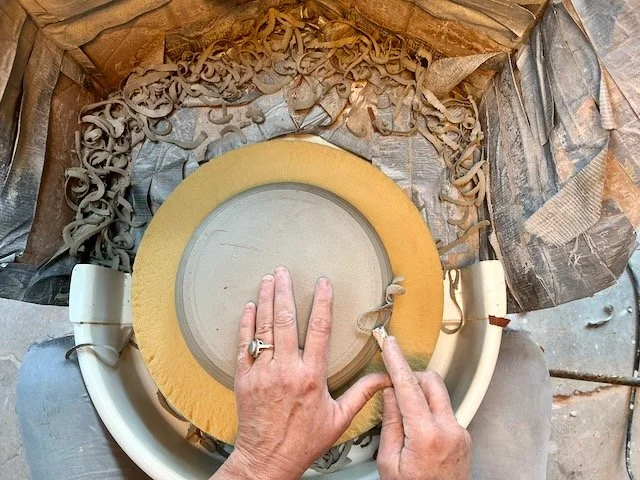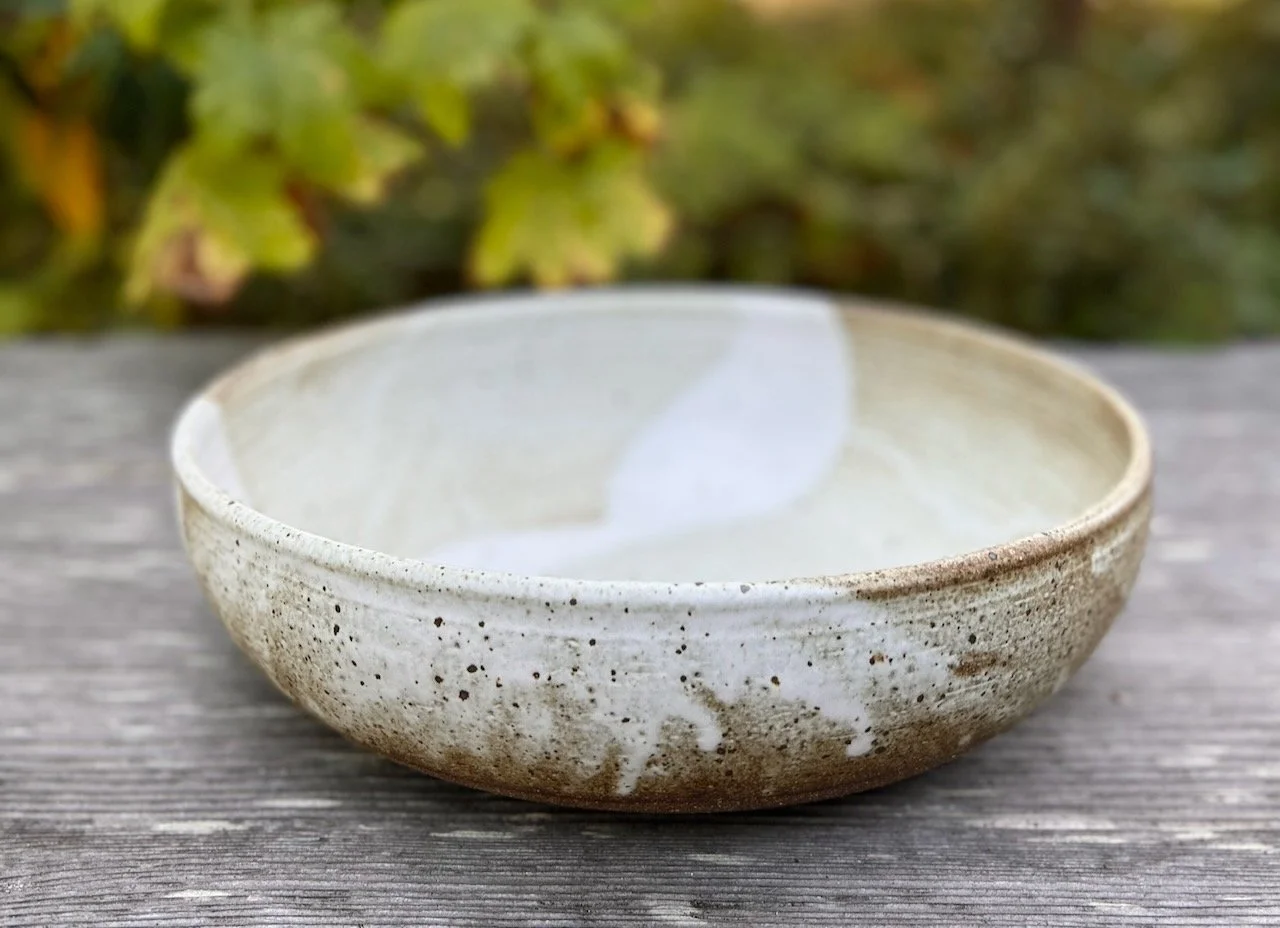Handmade pottery produces a lot of scrap clay. After Colleen throws a bowl on the wheel, she lets it dry for anywhere between a few hours and a few days, depending on the weather and the size of the piece. She then puts the bowl back on the wheel to trim off ribbons of excess clay at the bottom of the bowl, further shaping the bowl. Some potters simply discard the scrap clay that they produce. Their thinking is, “Clay is so cheap. It’s not worth it to recycle.”
Perhaps it’s Colleen’s years of cooking, or her years of making compost for the garden, but she sees something valuable in the material that others might discard. She saves scrap clay as she works, and over the years she has developed a system for reusing it in her pottery.
In our small pottery studio, we buy clay in one ton shipments, with each different clay body packaged in its own 25 pound bag. As Colleen works with the clay, she puts all the scraps from throwing and trimming into bags, to which she adds some water. After she has compiled several bags of recycled clay, she unloads them onto a large trimming bat and mixes them together in a sloppy process. Colleen calls the towering crags of mud she creates her “Close Encounters” sculptures. (Remember the sculpted mashed potatoes scene??) Creating a shape with lots of surface area helps to dry the wet clay so that it’s easier to handle.
After the mud tower has dried for a day or two, Colleen divides it into several balls that weigh between five and ten pounds. She lets the balls of clay sit for a couple of days, wedges them (a process similar to kneading bread), and then lets them sit in the bags for a couple more days, just to make sure all the clay has merged together.
The wetness and softness of the recycled clay is perfect for throwing larger bowls. It becomes easier to center the bowl, and the clay is more responsive to touch. Each salad bowl, fruit bowl, and serving bowl Colleen makes is one-of-a-kind because it comes from a unique combination of clay scraps. If you look at our large bowls, you will notice a range of neutral shades, with some bowls being more speckled than others. As Colleen says, “I can’t make the same bowl again, and I love that.” It feels good to create something unique out of scraps, as people throughout the world have done with quilts, rag rugs and the like.
Colleen loves work that involves keeping elements circulating through a system. In cooking, this means going through the refrigerator and the pantry to make use of what’s left over, with nothing going to waste. In gardening, trimmings and dead plants enter the compost pile, along with food scraps, to generate new soil to add back into the garden.
When it comes to recycling clay, Colleen sees the same principles at work. “The clay may be inexpensive, but it has travelled a long way to get to me, and I want to use all of it. None of it should go to the landfill.”




